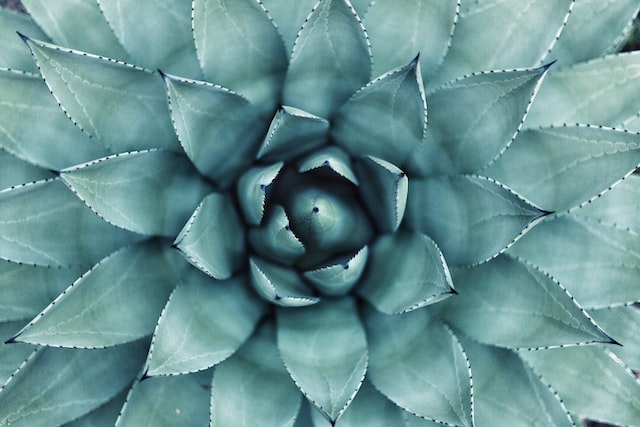Image from Unsplash
In ancient Mexico, it was called the “elixir of the gods.”
Mezcal originated as a fermented beverage made from the agave plant. It was developed by the pre-Spanish cultures of Mexico, such as the Olmec, Maya, and Aztecs.
For these people, mezcal was a sacred drink. Legend has it that the first batch of mezcal was created when a bolt of lightning struck an agave, cracking it open and cooking the heart of the plant to release its essential juices.
Before the arrival of the Spanish in the 1500s, the Pre-Columbian people did not possess the technology of distillation to make “hard liquor.” Thus, the original mezcal was more akin to wine or beer.
However, when distilled, mezcal becomes an extraordinary spirit quite unlike any other beverage in the world.
Difference Between Mezcal and Tequila
People often conflate mezcal with tequila as basically the same drink or different varieties of the same drink. It’s slightly more complicated than that.
While it is true that all tequila is some form of mezcal — not all mezcal is tequila. Tequila is made only from blue agave while mezcal can be made from an astonishing 30 different varieties of agave species.
Furthermore, tequila is produced by steaming the agave heart in an oven before being transferred to copper implements for distillation.
The production of mezcal, on the other hand, is far more traditional. The agave heart is first heated in earthen pits. Clay pots are then used for the distillation process, rendering a distinctive smoky flavor when compared to tequila.
The Mezcal-Making Process
Making mezcal begins with harvesting the agave. This can be crops grown by commercial agricultural methods or agave plants found in the wild. Some smaller specialty operators will only use wild-grown agave.
Just one agave can weigh up to 88 pounds! The next step is to extract “the piñas,” (the heart) by cutting away the leaves and roots. The heart is then placed in an earthen pit oven where it cooks for at least three days. The source of heat is hot rocks. It is this underground cooking that generated that distinct smokey flavor.
After cooking, the agave heart is crushed and mashed. To make traditional mezcal, the mashed product is fermented in a vat or barrel with added water. The fermented mixture is then collected and put through the distillation process.
Again, the traditional method is to use clay pots for distillation although some brands use copper vessels.
Mezcal Myths, Facts, and Legends
There is a widespread belief that mezcal is a hallucinogen in addition to rendering the intoxication of an alcoholic beverage. This is not true.
Mezcal is often mistakenly associated with mescaline, a powerful hallucinogen found in peyote, the latter taken from cacti.
But the agave is not a cactus, even though it is often referred to as an “agave cactus.” The agave is actually a “sweet succulent” that belongs to the lily family.
Another myth about mezcal concerns the worm traditionally found in each bottle. First of all, it’s not a worm but the larvae of a Comadia redtenbacheri moth.
Second, the “worm” has nothing to do with the flavor of mezcal. The original reason a worm was placed in mescal was to distinguish it from tequila. This latter notion is up for debate, however. Today, both tequila and mescal brands may contain a worm.
Another belief is that one can only purchase truly authentic mezcal by traveling to Mexico and by searching our generations-old craftsmen in small villages. Fortunately, that’s not true.
If you want to know where to buy mezcal that is just as authentic as the ancient land it hails from, an online search will yield high-quality dealers that care just as much about authenticity as you do.
Some believe that authentic mezcal must have a smokey flavor. Not true. Some master mescal makers purposefully create mezcal flavors that enhance the fruity, floral and earthy notes while avoiding smokiness by adjusting the cooking process.
Finally, many believe it is traditional to serve mezcal with an orange slice, much like tequila is served with a lemon slice. But purists say this is not -– or should not –- be the case. They recommend imbibing mescal straight from a neat pour.
In fact, the tradition of accompanying these drinks with lemon or orange slices originated as a way to mask the taste of bad or inferior batches of mezcal and tequila.
Mezcal is Special
Like a rare fine wine produced by a deeply traditional family of Italy, France, or Bavaria, authentic mezcal cooked to exacting specifications by incredibly skilled craftsmen and women in Mexico is, for many people, a way to connect with centuries of tradition and experience the ceremonial power of an ancient, mysterious culture.

